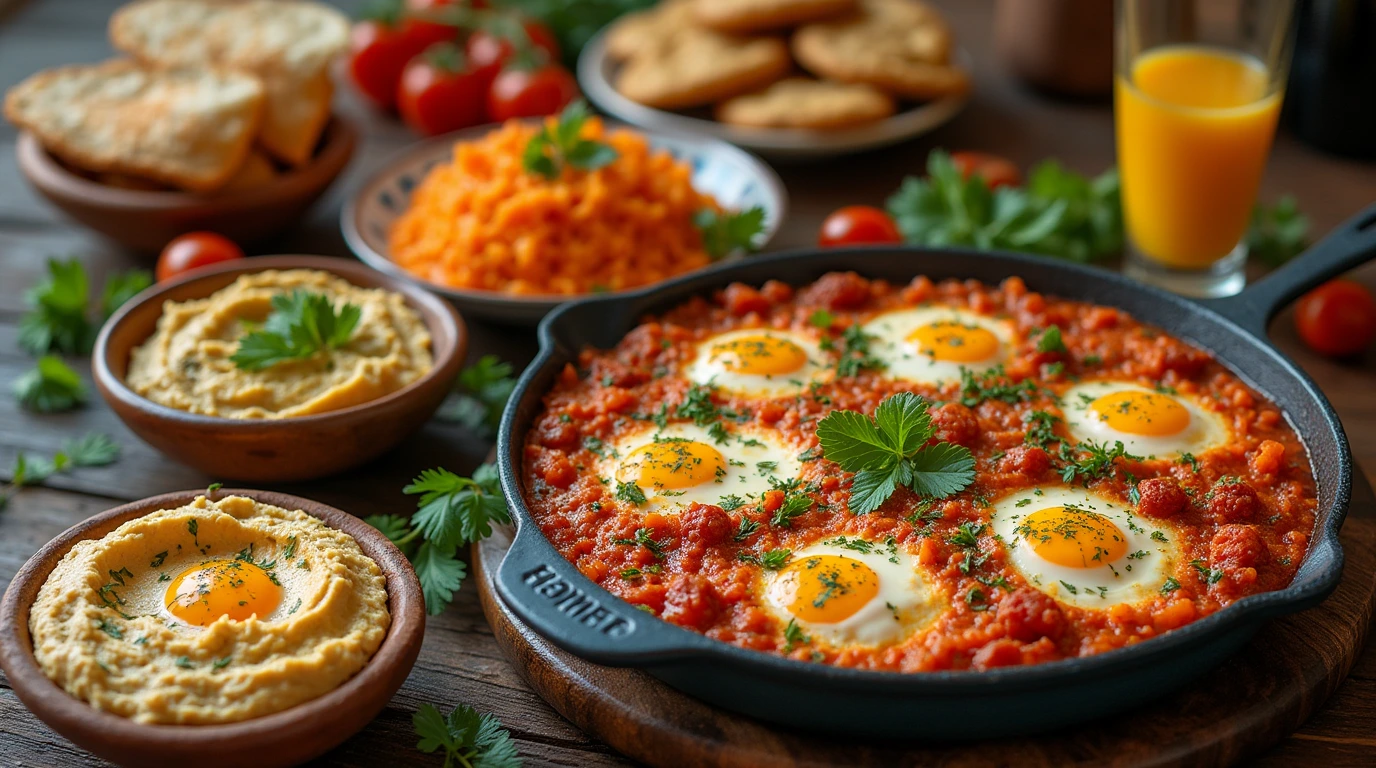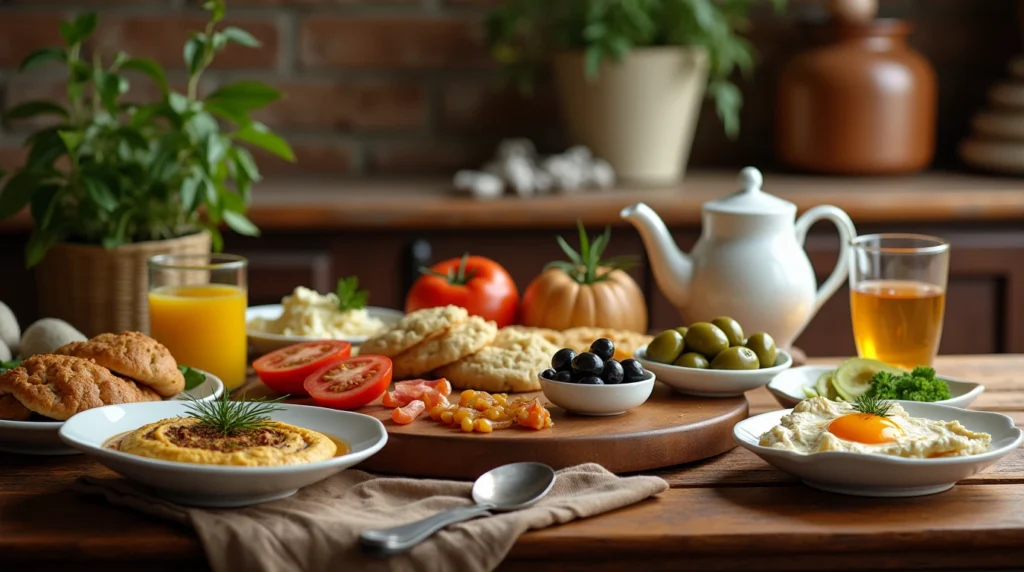
Table of Contents
Introduction
What do you imagine when you think of a traditional breakfast? For many, it might be a quick coffee and toast. But what if breakfast could be a vibrant and diverse celebration of rich flavors and ancient culture? With traditional Arabic breakfast dishes, you experience all of this and more. Arabic breakfasts are a delightful combination of fresh ingredients, aromatic spices, and warm hospitality that makes for the perfect start to your day.
Arabic breakfasts aren’t just meals—they’re a way to connect with ancient traditions, enjoy diverse flavors, and experience the hospitality that’s so deeply woven into the fabric of Arabic cultures. n this article, we’ll explore the essence of traditional Arabic breakfast dishes, the essential ingredients that make them unique, and how you can recreate these mouthwatering meals right in your own kitchen.
What Makes a Traditional Arabic Breakfast Unique?
An Arabic breakfast is more than just a meal to fuel you through the day; it’s a celebration of flavors that bring people together. The diversity of dishes, the range of spices, and the emphasis on fresh ingredients all play a role in defining an Arabic breakfast. Whether you’re having it at home with family, sharing it with friends at a bustling café, or enjoying a quiet meal on a sunny terrace, these dishes are meant to comfort, nourish, and delight.
The cultural significance of breakfast in the Arab world goes beyond food. It’s about hospitality, family gatherings, and starting the day with energy and joy. You may not realize it, but by enjoying an Arabic breakfast, you’re tasting a piece of history, a part of the daily rhythm of life that stretches back thousands of years.
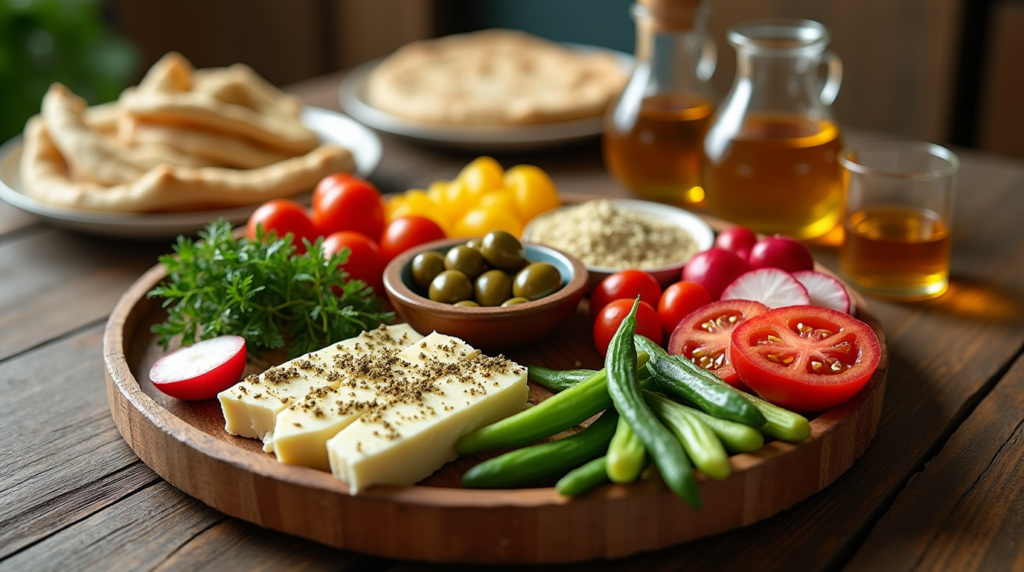
Essential Ingredients in Traditional Arabic Breakfast Dishes
To understand the soul of Arabic breakfast, it’s essential to familiarize yourself with the key ingredients that show up in almost every dish. These ingredients are not only flavorful, but they also represent the agricultural bounty and the culinary heritage of the region.
1. Olives & Olive Oil: Key to Arabic cuisine
Olives are one of the cornerstones of Arabic cuisine. Whether served whole, sliced, or as part of a salad, olives are a common feature in many Arabic breakfasts. Olive oil, often used generously in cooking, is equally essential. It’s drizzled on dishes like labneh (strained yogurt cheese) and is a key ingredient in making dips like hummus and foul medames.
2. Cheeses
Arabic breakfasts often feature cheeses that range from creamy to crumbly. Labneh is a tangy yogurt cheese that pairs perfectly with olive oil and za’atar (a Middle Eastern spice blend). Halloumi, a firm cheese often grilled or fried, is another breakfast favorite.
3. Fresh Herbs & Spices
Za’atar, cumin, and cinnamon are just a few of the spices that make Arabic breakfasts so flavorful. These spices are not just for taste—they also have medicinal and health benefits, making them a perfect way to kickstart the day. Fresh herbs like parsley, mint, and coriander are also used to garnish dishes and add extra freshness.
4. Fresh Vegetables
Tomatoes, cucumbers, and radishes are often served fresh, providing a burst of color and texture. They complement the creamy cheeses, spicy hummus, and the hearty foul medames, making for a balanced and healthy breakfast.
5. Breads
Bread is the centerpiece of nearly every Arabic breakfast. Pita, khubz, and manakish (a flatbread topped with za’atar or cheese) are staples. Bread is used to scoop dips, wrap up fillings, or simply eaten alongside other dishes.
Popular Traditional Arabic Breakfast Dishes
There are so many dishes to explore when it comes to Arabic morning recipe, each representing the unique tastes and customs of different regions. Below are some of the most beloved dishes you’ll find across the Arab world.
1. Hummus and Pita Bread
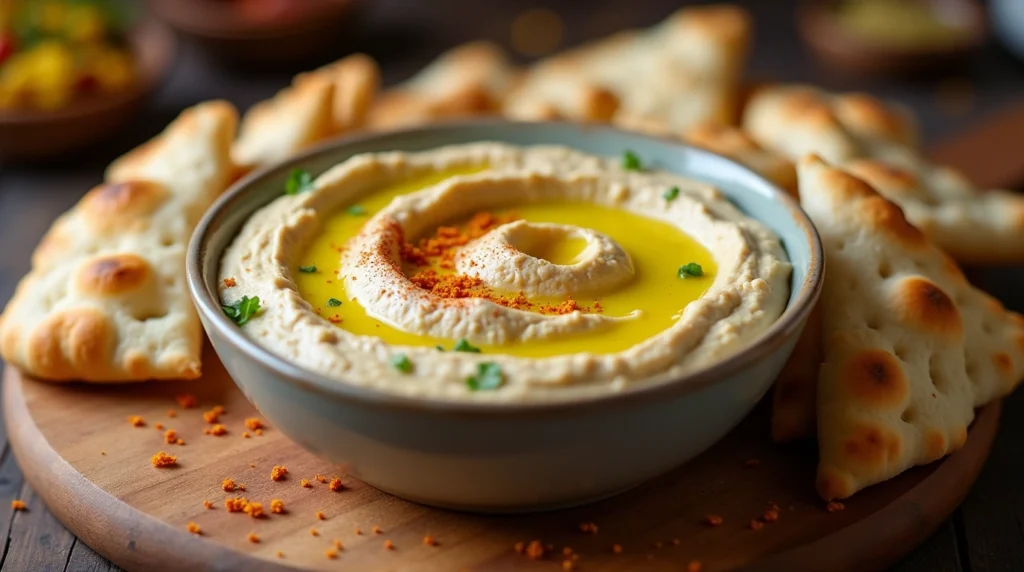
One of the most iconic dishes, hummus is made from pureed chickpeas, tahini (sesame paste), garlic, olive oil, and lemon juice. This velvety, rich dip is typically paired with warm, soft pita bread, making it ideal for dipping. While you may know hummus from its popularity in the West, in the Arab world, it’s a staple that has been enjoyed for centuries.
2. Foul Medames (Fava Beans)
Foul medames is a beloved dish in many Arabic countries, especially Egypt. Made from slow-cooked fava beans, foul is typically garnished with olive oil, lemon juice, garlic, and parsley. It’s often served with baladi bread (a type of flatbread) to scoop up the beans, and it’s hearty enough to keep you full until lunchtime.
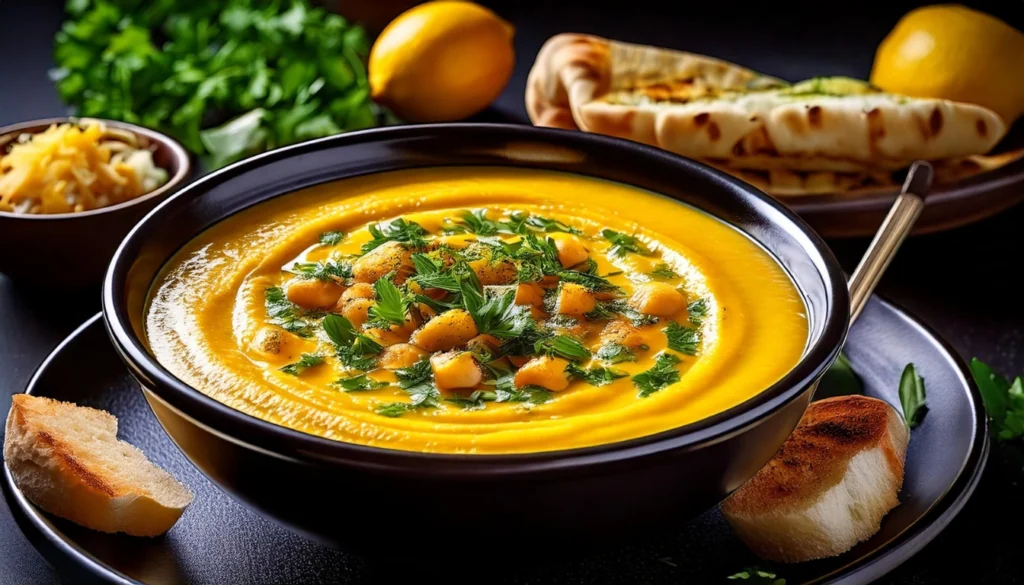
3. Manakish
A breakfast favorite in Lebanon and Syria, manakish is a flatbread typically topped with za’atar (a spice blend made with thyme, sesame seeds, and sumac) and olive oil. Some variations also include cheese, minced meat, or vegetables. It’s often served warm from the oven, making it perfect for a cozy breakfast or lunch.
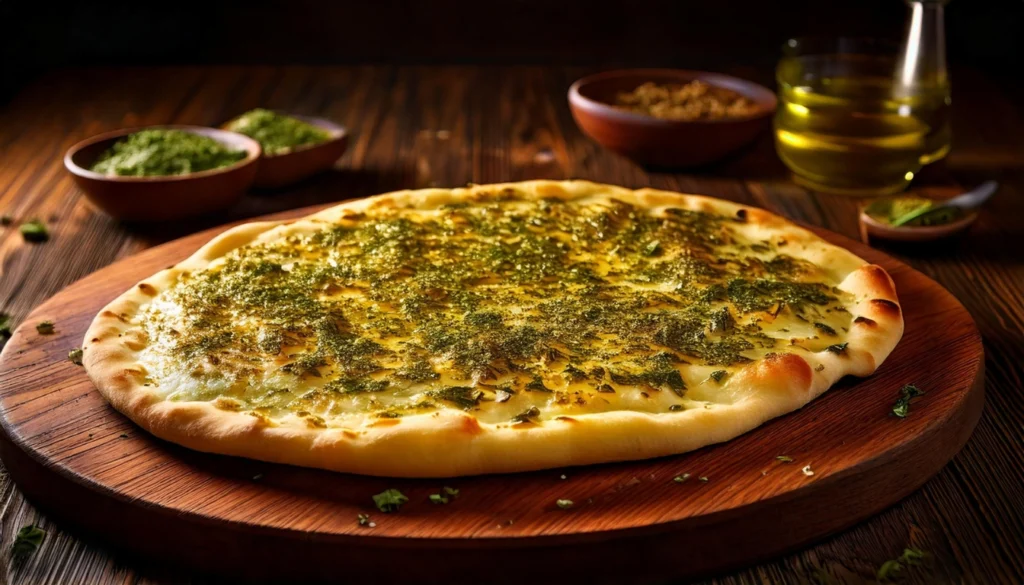
4. Shakshuka
Originally from North Africa, shakshuka has become a popular breakfast dish across the Middle East. It consists of poached eggs cooked in a flavorful tomato sauce, spiced with cumin, chili, and paprika. Shakshuka is perfect for dipping warm, crusty bread into the spicy, rich sauce.
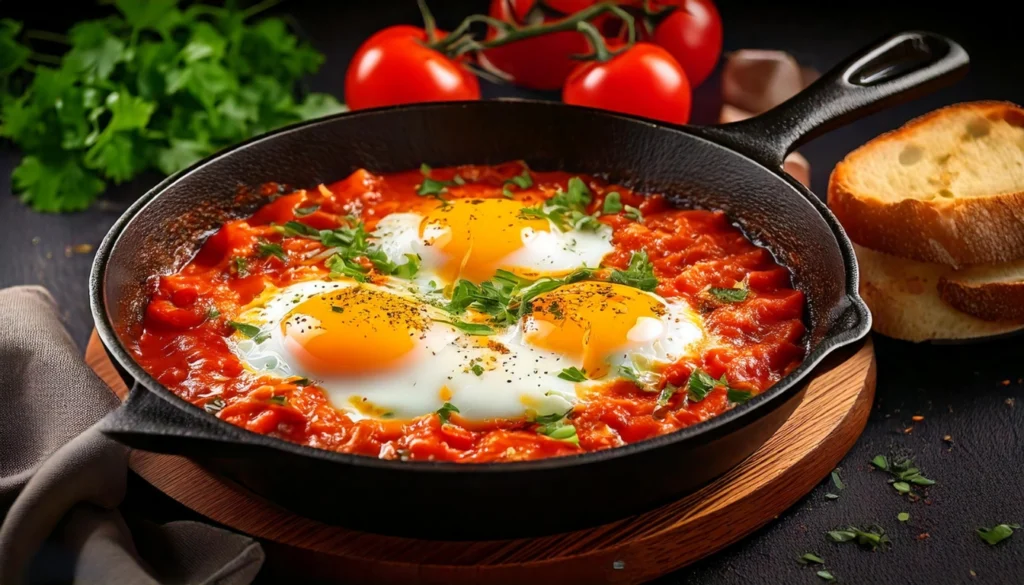
5. Labneh with Olive Oil and Za’atar
A simple yet satisfying dish, labneh is a creamy yogurt cheese that is often served with a drizzle of olive oil and a sprinkle of za’atar. It’s typically eaten with fresh bread, making it an ideal breakfast dish for those looking for something light but nutritious.
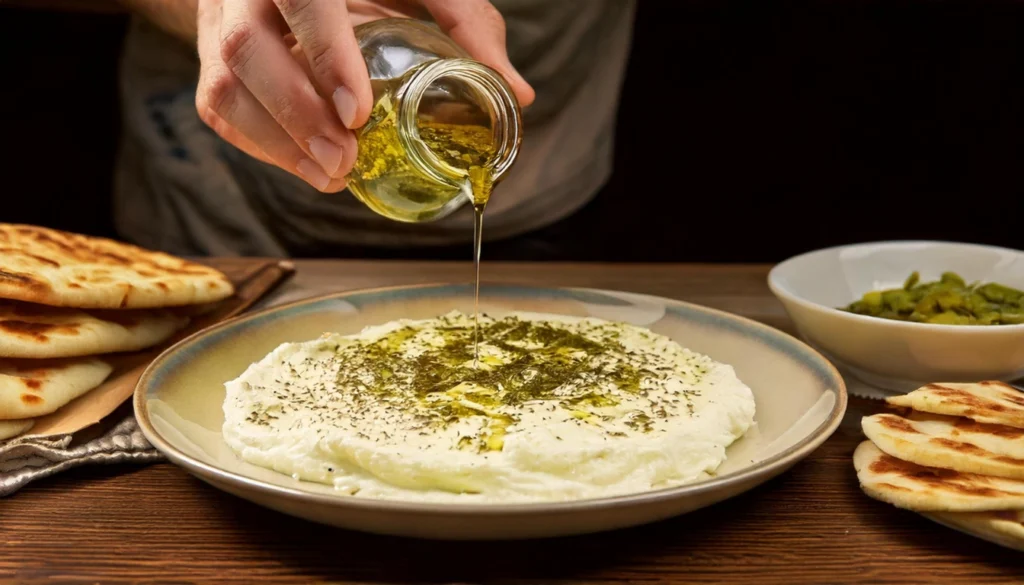
6. Baladi Bread with Olive Oil and Za’atar
One of the simplest yet most satisfying ways to enjoy breakfast is with baladi bread (similar to pita), drizzled with high-quality olive oil and sprinkled with za’atar. This dish highlights the freshness of the bread and the aromatic, earthy flavors of the za’atar and olive oil.
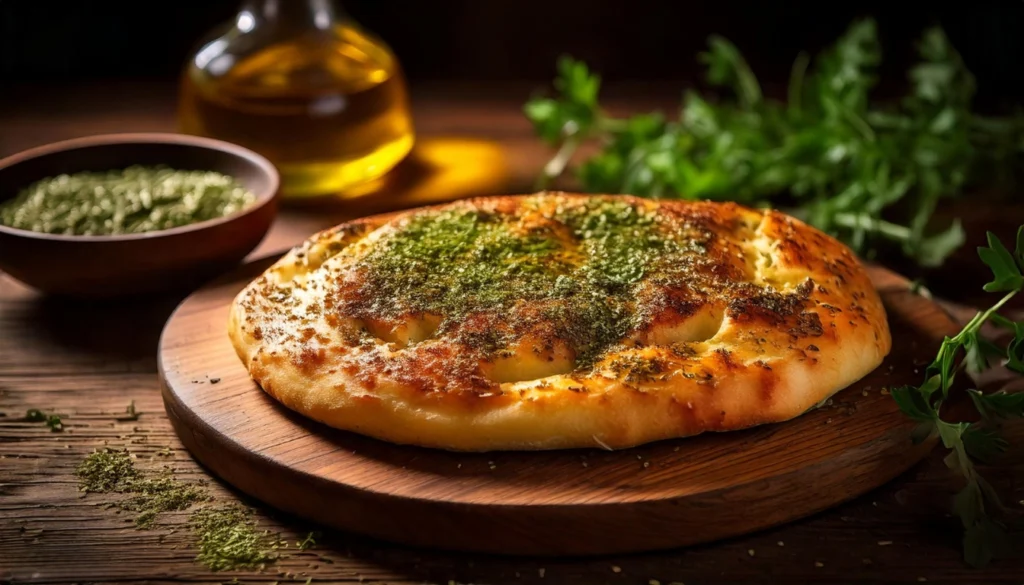
How to Make These kind of Dishes at Home
Recreating a traditional Arabic breakfast at home is easier than you think. Most of the ingredients are simple and can be found at your local grocery store or Middle Eastern market. Here’s how you can make a few of these beloved dishes at home.
Foul Medames (Fava Beans)
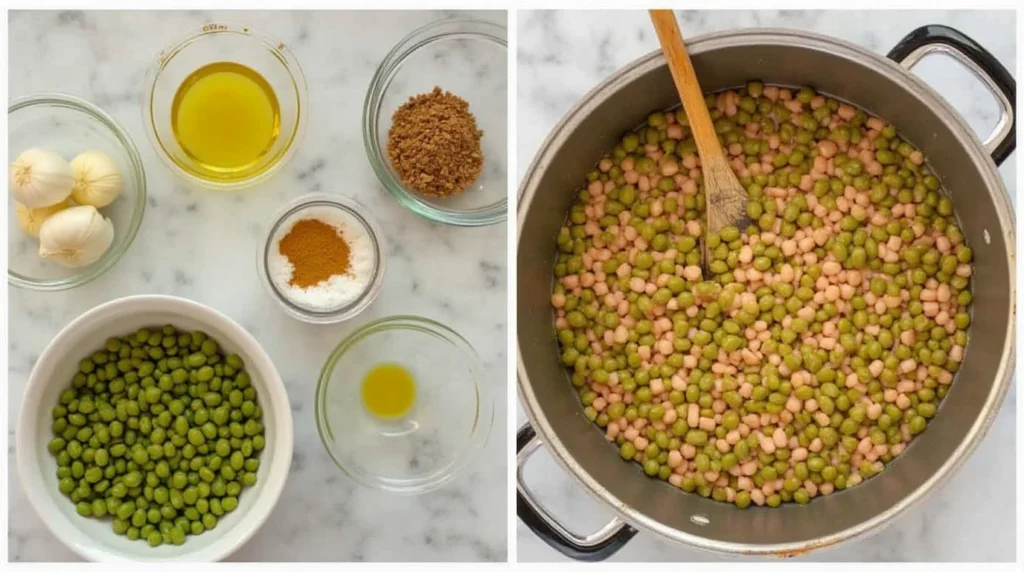
- Ingredients:
- 2 cups fava beans (canned or dried)
- 2 cloves garlic, minced
- 2 tbsp olive oil
- Juice of 1 lemon
- 1 tsp ground cumin
- Salt and pepper to taste
- Fresh parsley, chopped
- Instructions:
- If using dried fava beans, soak them overnight. Otherwise, use canned beans.
- In a pot, heat the olive oil and sauté garlic until fragrant.
- Add the beans and cook for 5–10 minutes. Season with cumin, salt, and pepper.
- Serve with lemon juice and a sprinkle of fresh parsley.
- Serve with warm baladi bread.

Labneh with Olive Oil and Za’atar
- Ingredients:
- 1 cup labneh
- 2 tbsp olive oil
- 1 tsp za’atar
- Fresh pita or flatbread for serving
- Instructions:
- Spread the labneh onto a serving plate.
- Pour a light layer of olive oil over it and dust with za’atar seasoning.
- Serve with warm bread for dipping.

Shakshuka
- Ingredients:
- 4 large eggs
- 1 tbsp olive oil
- 1 onion, chopped
- 2 bell peppers, chopped
- 4 tomatoes, chopped
- 2 tsp ground cumin
- 1 tsp chili powder
- Salt and pepper to taste
- Instructions:
- Heat olive oil in a skillet and sauté the onions and bell peppers until soft.
- Add the tomatoes and spices. Cook until the sauce thickens.
- Make small indentations in the sauce and gently crack an egg into each one.
- Place a lid on the skillet and simmer until the eggs are gently poached.
- Serve with warm pita or crusty bread.

Pairing Drinks with Your Arabic Breakfast
To complete your Arabic breakfast experience, pairing the right beverages is essential. Arabic breakfasts often come with drinks that complement the rich flavors of the dishes.
- Arabic Coffee: A strong coffee flavored with cardamom, perfect for sipping between bites.

- Mint Tea: A refreshing drink made from green tea and fresh mint, often served sweetened.

- Jallab: A sweet, cool drink made from dates, rose water, and grape

Conclusion: Embrace the Richness of Arabic Breakfasts
(Recap the experience of discovering Arabic breakfast dishes)
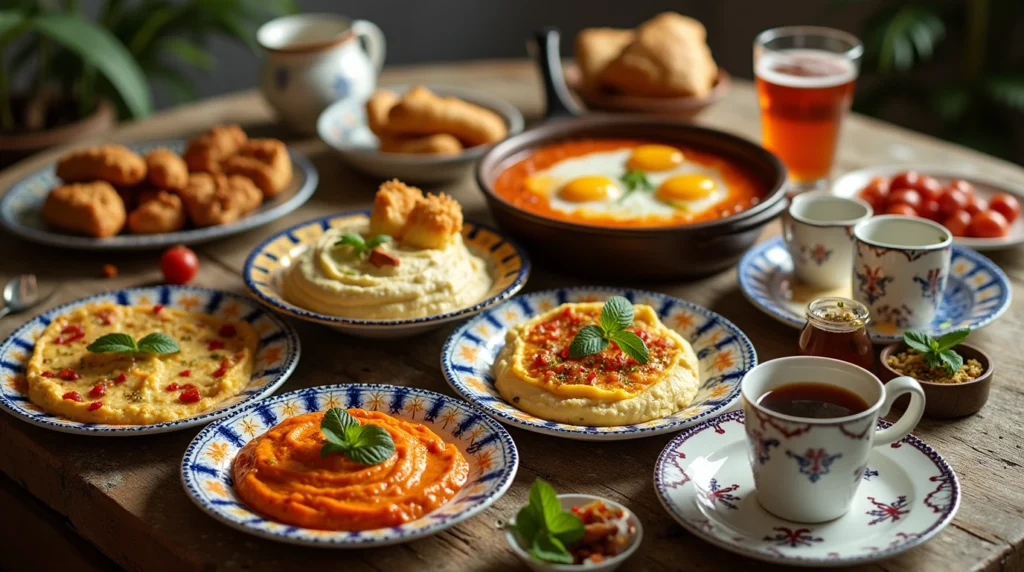
Exploring traditional Arabic breakfast dishes is not only a culinary adventure but also a way to connect with the rich cultural tapestry of the Arab world. From the warm, comforting flavors of foul medames to the fragrant, tangy notes of labneh, these dishes are an invitation to savor simplicity, heritage, and hospitality. Whether you’re cooking at home or enjoying a breakfast spread in a local café, the joy of an Arabic breakfast is a reminder of the power of food to bring people together.
FAQ: Discover Traditional Arabic Breakfast Dishes
Q1: What is the most popular Arabic breakfast dish?
A1: Some of the most popular Arabic breakfast dishes include foul medames, hummus, and manakish. Each country has its own favorite, but these dishes are staples in many Arabic-speaking regions.
Q2: How do I make Arabic coffee at home?
A2: To make Arabic coffee, you’ll need finely ground Arabic coffee beans, water, and cardamom. Boil the water with coffee and cardamom, then serve in small cups. You can adjust the strength and spice level to taste.
Q3: Can I make Arabic breakfast dishes ahead of time?
A3: Yes, many dishes like hummus, labneh, and foul medames can be prepared in advance and stored in the fridge. Just heat up or assemble them when you’re ready to serve.
Q4: Is Arabic breakfast healthy?
A4: Yes, many Arabic breakfast dishes are made with fresh vegetables, healthy fats (like olive oil), and nutrient-dense ingredients like beans and yogurt. It’s a nourishing way to kickstart your day.

